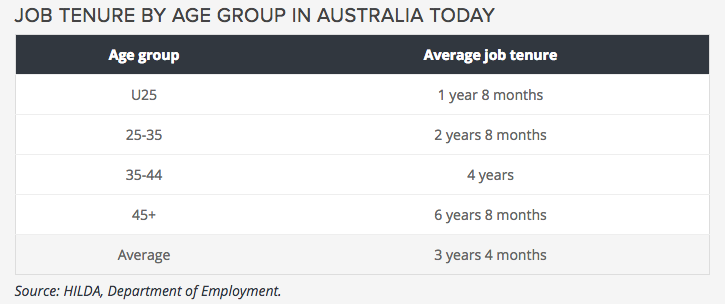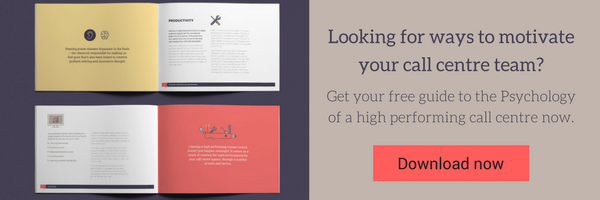Guide to Workforce Management of Transient Workers

Guide to Workforce Management of Transient Workers
All my bags are packed
I’m ready to go
I’m standin’ here outside your door
I hate to wake you up to say goodbye
But the dawn is breakin’
It’s early morn
The taxi’s waitin’
He’s blowin’ his horn
Leaving on a Jet Plane – Jon Denver
Brings a tear to the eye, doesn’t it? It’s an amazing song by Jonny Denver, but also, is the little tear kind of real, just a little? When you think about your customer service team, especially if you’re the manager of a call centre, it hurts to know your team is made up of agents who are likely going to move on very quickly. Workforce management is tricky when a fair proportion of your team won’t be sticking around for long. After all, the average turnover in the call centre is 29.5% per annum according to the recent Hallis survey, which is higher in Australia and New Zealand than most other countries.
Hallis says staff turnover costs call centres over $11,500 per staff member. So you have a team of 15 agents? Around 5 of them will be gone within the year, costing you $57k. Every year.
You also have:
+ Termination administrative costs
+ Loss of productivity from other employees filling in for vacant position
+ Loss of productivity in early stages of employment
+ In-house hiring costs
+ Training/induction costs
+ Loss of productivity in final stages of employment
LESS Unpaid costs while job vacant
= Total cost of employee turnover
Source: Frontline Recruitment Group
Ouch.
But still, you need behinds on seats. If you had the luxury of waiting until you could recruit someone who would stick around for the next few years at least, you’d have to explain a lot of empty seats, missed targets and cranky customers to your powers that be. So it comes down to figuring out some workforce management techniques that enable you to maximise the impact of these transient workers, while minimising costs and time spent on people who aren’t sticking around.
It’s not abnormal
A good place to start is by realising that a reasonable staff turnover isn’t abnormal nowadays. The national average job tenure in Australia is under 3 years for 25-35 year olds.

I’m sure you’d be cheering if your average was anything like this, but what this means is that the days of ‘a job for a lifetime’ are long gone. Workforce management techniques are shifting towards supporting a more flexible, adaptable and mobile workforce. It’s all about understanding your staff, and putting in place the right enablers to get the maximum output of them for however long they are with you.
First impressions
47% of employee turnover occurring within the first 90 days of employment at a new job.
If you know a lot of your staff are probably going to move on very quickly, then it’s easy not to bother too much with a rigorous on-boarding process.
This is a mistake.
You are creating a self-fulfilling prophecy for yourself if you don’t train your staff properly because you expect them to leave. If they feel like they don’t know what they’re doing, they won’t engage and they certainly won’t stick around- even if they may have otherwise. Your workforce management strategy needs to include a standardised induction program that is in depth enough to give your agents confidence to achieve their targets, but not so detailed that it requires constant updating.
Monitor, don’t spy
It’s easy to play Big Brother to your staff if you doubt their commitment to their jobs. The reality is, many aren’t committed, but this doesn’t mean that they don’t have integrity and you need to watch them closely. The right system will allow you to listen and offer remote training and guidance while they’re on calls, without needing to sit beside them and plug in. It’s discreet, and it’s important. The quality of customer service must not waiver, and a strong recruitment process coupled with the right system will allow you to ensure that top customer service is always the main outcome of your workforce management techniques.
Gone, but not forgotten
Just as your on-boarding strategy is vital, so is your off-boarding.
You can’t shrug off the off-boarding process because your staff member is leaving. Even if you have a million things to do with the staff that are actually sticking around, a gazillion things to do to meet your targets, you need to make sure staff exit the company appropriately. With staff coming and going in and out of the company, industry, area and country, they might swing back around your way. If they’re a strong performer, you want them to keep you on their radar and remember you fondly. They also might have mates they can refer to help fill your chairs.
So don’t forgo the exit interview. Take the time to understand their reasons for leaving, and get their perspective on the role. Take these learnings and adjust what needs to be adjusted.
Use the cloud
It is vital that you have a reliable system for information storage when you have a workplace made up of a good proportion of transient workers. When people leave, you can’t have them taking important company information or knowledge with them. All sensitive information can be secured, and the volume of data you can collect on your employees, their performance, targets, feedback etc, is only limited by your budget. No longer do you need a network that has enough space to save all your files, or a room to house all the files. The cloud makes life so much easier, get amongst it.
Having a workplace made up of transient workers is certainly a challenge for any manager, but does not have to prevent your team from performing the way you need them to. Transiency is the way of the workplace in this day and age, with the drivers being opportunity, flexibility and convenience rather than salary and security. Your workforce management techniques need to be adjusted to make sure you’re working with this trend, not against it. With a shift in mindset, the right systems and processes in place, you can still have staff hitting every target- even if they’re booked to go off on their next adventure.

